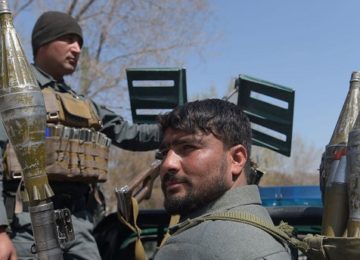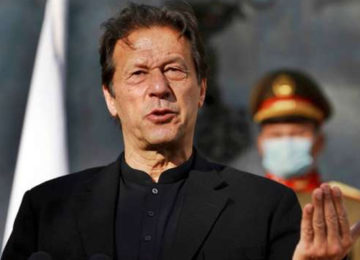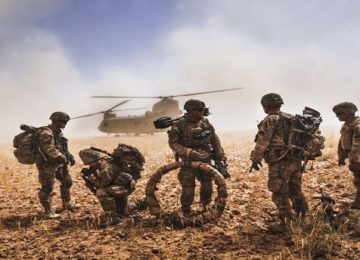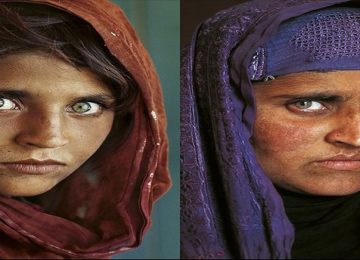January 10, 2019.
Hashish or chars is a fairly common substance in Afghanistan. Its use, without ever attaining the levels of mass consumption that characterise other lightly-intoxicating substances in other war-torn countries, like the chewing of qat in Yemen or Somalia, for example, has remained relatively widespread. This does not mean that it is condoned by society: hashish-users, known as charsi, are stigmatised in popular discourse as lazy or even unhinged. However, the use of hashish in Afghanistan has also acquired an element of communal ritual, allowing sometimes for a different depiction of hashish-smokers to emerge, one more acceptable to dominant Afghan values and traditions. In this dispatch, AAN’s Obaid Ali, Fabrizio Foschini and Jelena Bjelica look at the cultural history of hashish in Afghanistan.
This is the second dispatch in a two-part series on the cultural history of hashish in Afghanistan. The first dispatch, which looks at the cultivation and production of hashish, is available here.
Although opiates have understandably dominated the discourse around drug use in Afghanistan (read AAN analysis here and here) over the past decades, hashish has long been a mainstay of recreational drugs throughout the country. In fact, its use has traditionally been more widespread than that of opium (which was once widely consumed, often as a form of self-medication in places such as Badakhshan or Herat). Nowadays, the number of hashish smokers has increased to over a million users, and has spread among the young and educated class in urban areas.
Afghans’ familiarity with hashish is also quite apparent from its references in Afghan folklore. There are, however, different perceptions of hashish-smokers in society. Arguably, an ordinary Afghan could smoke an occasional spliff in order to relax and still keep his social status untainted more easily than if he consumed alcohol or opiates (the social stigma for women consuming any drugs, including alcohol, would be far higher). Even so, regular smokers get the rather nasty label of charsi. The social stigma attached to smoking hash seems to stem less from the illegality of the substance, than from the real or imagined effects it provokes. Hashish smokers have a reputation for being rascals and criminals.
Use of hashish in Afghanistan from the 1970s until today
The use of hashish in Afghanistan from the 1970s to the mid 2000s is not well-documented. Sources from the 1970s, such as the US 1974 cables (here and here) offer rare insights into local habits. However, these documents mainly portray an official narrative, ie the Afghan government blaming local consumption on “the bad example of youthful western tourists.” In another cable, also from 1974, the Afghan government informed its American counterpart there had been no indications of significant ‘abuse’ of the drug by Afghans themselves. In this 1975 cable the US reported that “GOA [the Government of Afghanistan] does not, however believe there to be an urban drug abuse problem with exception of foreigner transients.” The cable said that, “Widespread traditional use of hashish is either overlooked, ignored or not seen as constituting a problem.” The post-1978 coup State Department’s annual narcotics report on Afghanistan said that between “150 and 250 metric tons of hashish per year is derived from locally cultivated cannabis,” while the “statistics on drug abuse within Afghanistan are virtually non-existent.”
In the 1980s, during the anti-Soviet jihad, the use of cannabis spread. Former United Nations Office on Drugs and Crime (UNODC) drug advisor in Afghanistan David Macdonald in his book Drugs in Afghanistan writes that “many mujahideen fighters were paid or rewarded for their fighting with hashish, which they often consumed before going to the battle.” Macdonald was told this by Mullah Akhundzada, the then-head of the Taleban High Commission for Drug Control, at a meeting held in 1999. Hashish consumption has long since been connected to the primary actors of this conflict. The use of chars by some notorious Kandahari commanders and their militiamen was associated with the loss of all moral order and breakdown of social rules that characterised the Civil War of 1992-94 there and in many other parts of the country. Even more recently, the age-old connection between the use of hashish and fighting has not been denied. Policemen (both ANP and ALP) in particular have been known to consume hashish, especially when left stranded to man isolated and remote security outposts. The Afghanistan Ministry of Interior (MoI) conducted nationwide urinary drug screening of Afghanistan National Police (ANP) in 2009 and 2010, which found that of the 9,034 ANP who tested positive for drug use, 80.5% (7,269) screened for tetrahydrocannabinol (THC), a psychoactive constituent of cannabis. (1) The 40 years of continuous wars in Afghanistan undeniably contributed to an increase in drug use, not only of hashish but of others too (see this AAN dispatch on drug use in Afghanistan here).
During the Taleban regime, hashish was perceived as a ‘traditional Afghan vice’, as its use was widespread and an old habit among parts of the population. The Taleban imposed “draconian sanctions against both producers and users” (Macdonald, pp 25). In 1997, the Taleban issued a statement, which said that the use of hashish and heroin was not permitted in Islam (Macdonald, pp 80). These measures, however, were not particularly enforced. In 2003, a UNODC assessment on problem drug users in Kabul city, Macdonald reported, found that almost 24,000 people were regular hashish users, as reported by doctors, mullahs, shopkeepers and other key informants. But this number, according to him, was incorrect and probably an underestimate due to a lack of data and limitations of the UNODC assessment.
The latest Afghan drug use survey carried out in 2015 by the United States Bureau of International Narcotics and Law Enforcement Affairs (INL) found that approximately 900,000 to 1.1 million Afghans use cannabis. The survey also found that cannabis is the second most prevalent drug used in urban centres in the country, with the highest rates of cannabis use in Herat (4.0 per cent of the population) and Kabul (3.9 per cent). Cannabis, the INL survey found, is used by 2.4 per cent of the adult population, with men being the predominant users. Evidence of cannabis among women and children was negligible, the survey found. Smoking charsis almost entirely a male pastime, then. Before looking at how hashish is viewed in Afghanistan, it is worth stressing that its use is not an entirely ‘happy’ phenomenon, a point Macdonald makes (p26):
Western sensibilities and perception of cannabis often neglect the fact that the hashish produced in Afghanistan is often more powerful than much of the hashish available in Europe, and daily consumption rates among Afghan users significantly higher than their western counterparts. Reports suggest that hashish use in such an impoverished country as Afghanistan contributes to severe financial problems for the family, leads to arguments and fights among family members over money spent on drugs and exacerbates endemic health problems such as bronchitis, pneumonia, tuberculosis and other respiratory complaints.
Hashish to suit different tastes and budgets
Afghan hashish is found on sale in different varieties, which largely refer to where it was produced and also define its quality and price. Balkh and Panjshir provinces are famous for their high-quality chars,known as shirak. Their hashish, compared to that in other parts of the country, is also more expensive.
Northern Balkh province has for some decades been home to the most famous type of Afghan hashish: the so-called ‘Afghan Black’ of international renown largely coincides with the hashish produced in this area. Over the course of the last few years, however, Shirak-e Panjshir has become the most sought-after and expensive product on the Afghan market, with seven grams fetching a price of 250 Afghanis (around 3,5 USD). Shirak-e Panjshir has a peculiar green hue and a very strong smell and easily melts in the cigarette or chillum. Among those who smoke it, Balkh now ranks second in the chars’varieties in Afghanistan. Shirak-e Mazar is the most famous type of hashish originating from this province: it is of a dark brown colour and has a pungent smell. Compared to Shirak-e Panjshir, its effects are less strong and therefore it is comparatively cheaper (7g for 200 Afs). Kandahar and Logar (2) provinces provide products of a relatively lower quality that rank in third place. Both provinces produce chars of a black-colour, which is found in the market for the relatively cheap price of 150 Afghanis for seven grams. The ‘best price’ product available to consumers without much money to spend is that coming from Nangrahar province: it sells at 100 Afghanis for seven grams and is also the lowest quality chars on the Afghan market.
Besides commercial production, habitual charsis sometimes produce home-made chars for their own consumption. In Kabul, for instance, there are a number of mini-production factories that only produce small amounts of chars. Basically, hemp is cultivated in the house courtyard, usually in a corner of the garden that remains out of sight of potential guests or neighbours. Once the bush grows enough and its blossoms have dried, it is cut off and dried. This process takes at least six months. Once it is dry, then the dried blossom is removed and it goes through a filtering process in order to collect the particles and pieces of dried blossom. The collected parts are then slowly warmed up over a fire and mixed together for around ten minutes. The preparation turns into an oily substance and is pressed together into a piece of chars.
Hashish in Afghan popular culture
Hashish is an established topic in popular Afghan culture, being the subject of many jokes and songs. (3) The most famous hit about hashish is probably the Pashto classic folk song “Adam Khana Charsi”, performed by many singers throughout the years (here in a rendition by Naghma). Written in the tradition of landai women’s poetry (read also here), the lyrics lambast Adam Khan’s lack of virility, enjoining him to remove his bed from the nuptial chamber to the courtyard as his wife is not interested only in sleeping, as he seems to be. From the title of the song to the mimicry usually enacted by singers who perform it (see also this video), the figure of Adam Khan is a stereotype of the chronic hashish-smoker, apathetic and lethargic.
In fact, one of the effects most frequently associated with the use of hashish in Afghan popular belief in the reduction of the sexual impulse and thus of the inability of a man to fulfil a husband’s obligations thereby securing his progeny. As these are issues of some importance in the eyes of the Afghans, the inculcation of this notion by society at large can well represent an attempt to discourage the use of hashish through psychological propaganda. Interestingly, the same fears had already been raised by medieval Islamic scholars in order to deter believers from indulging in hashish smoking (although some ascetics actually sought a reduction of their sexual urge through smoking, in order to better concentrate on spiritual matters).
Compounding the apathy it induces, hashish is also said to provoke fits of rage and madness, making charsis extremely aggressive at times. The term charsi can thus be used in Afghanistan to refer to anybody who behaves over the top, arguing, bragging or boasting to the point of appearing out of his mind. This is partly due to the long-term impact of cannabis: cannabinoids lodge in the fatty deposits of the brain and remain there for weeks, unlike alcohol or many other drugs, which the body excretes rapidly through urine. The effects of the drug are therefore longer-term and can appear to affect a person’s character or personality. This can give regular hashish smokers a recognisable appearance and attitude, which has given rise to a stereotype applied to other people as well, as a way of slighting them.
Overall, Afghans view hashish-smokers as generally being socially useless. However, there seem to be niches of popular discourse in which the charsis are not just criminals or despicable characters but a peculiar class of people, noted for their generosity and with their own sociability. In some parts of the country, this tradition seems to still be alive.
In the chillumkhana of Baba Qu
Ways of smoking chars in Afghanistan indicate a rural-urban divide, slowly bridging towards a standardisation of practices by young people countrywide. While urban hash smokers generally prefer a to empty a cigarette and fill it with hashish and tobacco (with youngsters developing creative ways of smoking bongs, such as piercing holes in an apple to inhale the smoke through it) – the rural, and, arguably traditional, way of consuming hashish still practiced by the elderly is through an earthen pipe or chillum. This can sometimes take the form of a collective act, one more sociable and ritualised than sharing a joint among friends, as will be seen in the most famous of all Afghan chillum-smokers, Baba Qu-ye Mastan.
Baba Qu, a figure who lived in the first half of the twentieth century and whose historical persona borders on the mythical, still inspires a form of mystical devotion. He is buried in the ancient town of Balkh of the namesake province, and is still remembered across northern Afghanistan as a generous and chivalrous man, who would always provide lavish hospitality of food and chars to anyone in need. Even today, when local charsis light their cigarettes or chillum filled with chars, they first praise Baba Qu:
بابه قوی مستان
دور قبرت گلستان
هم بهار و هم زمستان
Baba Qu-ye Mastan
Your grave is a flower garden
Be it summer or winter
When charsis being smoked collectively and the cigarette or chillum passes from one person to another, smokers repeat this invocation:
پره به پره جوانای سره، هرکس بد می بره سر نبره
Pass on, pass on to the brave youngsters, death to those who hate.
(The word parah describes the act of passing a cigarette or chillum filled with chars from one person to another).
After Baba Qu’s death, his fellow charsis built what is known as the chillumkhana (chillum-house) or saqikhana next to his grave. (4) This is a small building consisting of a main hall, very dark and with a low ceiling, furnished with stone-made benches lining the inner walls. There are several chillums available in the room and a caretaker in charge of filling and lighting them. The rules of the chillumkhana are clear: whoever gets inside has to smoke and failing to do so would be disrespectful. Visitors are welcome to contribute with offers of money or chars – provided they have a good batch, for in the chillumkhana only top-quality Shirak-e Mazar is used. If they do not wish or cannot afford to contribute, this is no problem: they get to smoke for free, but most importantly they have tosmoke and pay a tribute to Baba Qu. At any rate, inside the chillumkhana the air is saturated with the fumes of burning hemp: all the windows and doors are kept shut and there is no fresh air circulating, augmenting the effects on the smokers. This way of smoking is called shishaband or darwazaband (closed-window/door).
Seeking solace in Kandahar
Baba Qu-e Mastan was by no means an isolated instance. A senior teacher in Kabul recalled how in the time of Zaher Shah, when he had been posted to a school in Spin Boldak, he would go on days off together with his colleagues to the place of Zabar Ali Padsha in Khadanay, roughly halfway between Spin Boldak and Kandahar city. Zabar Ali was an elderly man who had never married and had a big guesthouse with many servants devoted only to providing guests with chillums filled with the best-quality hashish. He was apparently well-off, or received sumptuous donations from the more affluent guests, because he would attend to his guests’ needs for whole evenings, not only offering them a smoke, but even having lambs slaughtered and cooked to feed them when, later in the night, they would go hungry. After some years of such visits, having become well acquainted with Zabar Ali, the teacher was astonished to see the old man, by now over ninety years old, performing a series of gymnastic exercises that would have put to shame a circus acrobat. Zabar Ali attributed his body strength to his still being a virgin, something he confessed to his friend, the teacher, and to his steadfast use of only the best quality hashish.
A more recent character familiar to many Kandaharis – Mrech Agha – has taken the place of Zabar Ali Padsha. In his guesthouse outside Kandahar city, until quite recently, Mr Chili Pepper, as his name translates, would host whoever wanted to enjoy a joint, assisted by a small army of servants and volunteers. Mrech Agha assiduously held his darbar (court), (5) utterly indifferent to the fierce battles being fought between first, the mujahedin, then between the Taleban and government forces, until his death in 2014. Merch Agha was for a long time a local celebrity. Taxi drivers in Kandahar would sport placards with poetry praising his goodness, something along the lines of: “This person is good, that one is also good, but I salute Mrech Agha!” (A video of a Pashto song praising Mrech Agha here.)
After his death, a tense standoff took place at his home. His eldest son, feeling he could not step into his father’s large shoes, summoned all the assistants and announced he was dismissing them, as he would have to discontinue his late father’s habit of providing hospitality to half of Kandahar’s charsis because of the costs it entailed. Mrech Agha, however had two wives, the son being born from the first one. Reportedly, at the critical moment, the other, younger wife, summoned him and enjoined him not to dismiss the house-servants, “not to destroy Mrech Agha’s langar (refectory)”: she herself would provide whatever economic means was required in order to continue her late husband’s enterprise. Thus, she showed the same resolve as Malalai on the battlefield of Maiwand, even if the cause was not quite so noble.
The role played by figures such as Baba Qu, Zabar Ali and Mrech Agha sit somewhere between that of a private entertainer – with all the ideas of individual hospitality that that entails – and that of an institution which offers a service to the public at large. The idea of making a langar is obviously connected to the practice of providing food for everybody attending a religious ceremony or festival, common to Islamic communities across Central and South Asia, and often, but not exclusively, connected to Sufi brotherhoods. More significant than showing a connection in terminology between this type of hosts and the sphere of Sufi mysticism is the fact that Mrech Agha’s assistants came to call themselves his muridan, which translates closely into ‘disciples’ and is a term used quite exclusively for the followers of a Sufi tariqa or ‘brotherhood’. It is also possible to listen to a tarana (in the context of southern Afghanistan, a mostly vocal song often dealing with religious topics) sung by the muridan of Mrech Agha. Baba Qu himself had reportedly been the disciple of a famous Sufi leader in Balkh. Also, marginality and eccentricity in Afghanistan are seldom allowed to totally develop as such, as a sort of counter-culture in open opposition to the established social order. Thus, these ‘social charsis’ have developed their own sub-culture and gatherings in the shadow of some holy shrines. Notable individuals among them were connected to these or followed established patterns of networking and symbolic codes in order to achieve some degree of public recognition.
But what is the purpose of such a social institution, then? The comparison to Sufi spirituality can again be useful. The latter, as described by scholars of Afghan history such as Robert Edwards or Nile Green (6), has often been enjoyed by Afghan men in order to transcend boundaries of kinship and fulfil the universal human need for avenues of social and spiritual engagement, detached from the strife and tensions of everyday life. At another level – and for different kinds of souls – this peculiar type of hashish-smoking gathering may have served the same primary purpose.
Other invocations uttered routinely by Afghan smokers point to this therapeutic aspect of the use of cannabis:
Nush nush, deh ke gham-et faramush
Smoke, smoke, come on so that you may forget your sorrow
Or the more caustic:
Nush nush, dushmanha-et kus-forush
Smoke, smoke, your enemies are just pimps
By allowing Afghan men to fraternize beyond divisions of class, ethnicity or tribe, characters like Mrech Agha may have played an important role in allowing Afghans not to lose their humanity amid the havoc of a lifelong conflict.
Conclusion
In the West, for hash users at least, Afghan chars has acquired something of the status of a legend: ‘Afghan Black’ has a reputation as a potent psychoactive drug, as seen in the first dispatch in this mini-series. Afghan experiences and views of hashish use are quite different. Most respectable Afghans continue to consider charsis a useless and marginal category of people. Nonetheless, the great number of Afghan hashish smokers may show, instead, the growing strains affecting many strata of beleaguered Afghan society. From soldiers to students, many seek solace in a puff of smoke. That they are almost all men shows something about who can access such solace and points to costs paid by wives and children if limited household income is ‘misspent’ by husbands and fathers. Even so, it can also be recognised that thecharsisubculture also has its legends and rituals, and that these connect to the great Afghan values of generosity and hospitality, and to music, poetry and Sufism.
(1) A local militia commander called Abdullah Charsi even became a high-ranking officer of the Afghan National Border Police in western Afghanistan in 2012, showing the possibility of a career even with such a strongly-flavoured sobriquet.
(2) During the anti-Soviet war, Logar also had a famous local mujahedin check post, on a hill west to the road to Paktia, the fighters at which were known as charsian. It was a famous weekend hang out spot for the local youth who had not much choice where to spend their spare time.
(3) The same sorts of jokes and gossip are reported from the Tribal Areas of Pakistan. For example, the Afridi Pashtuns inhabiting those parts of the Khyber Agency where hashish is extensively grown are said to be the world’s most skilled people at recognising varieties of chars by its smell: these ‘human hounds’ are able to tell not just the variety but even the specific field where a particular hemp plant is grown, just by smelling a piece of its hashish.
(4) Saqi is the cup-bearer of Persian classical poetry, a symbol for the serving of substances, which offer a pleasant intoxication that allow one to forget personal or worldly troubles.
(5) The lexicon here is important: Mrech Agha ‘held court’ like some sort of secular or religious authority; Zabar Ali also styled himself a padsha, a king, showing the status recognition that this unique class of people enjoyed in the eyes of at least part of Afghan society.
(6) David B. Edwards, Heroes of the Age: Moral Fault Lines on the Afghan Frontier, University of California Press, 1996; Nile Green, “Tribe, Diaspora and Sainthood in Afghan History”, Journal of Asian Studies, Vol. 67, n°1, 2008.








